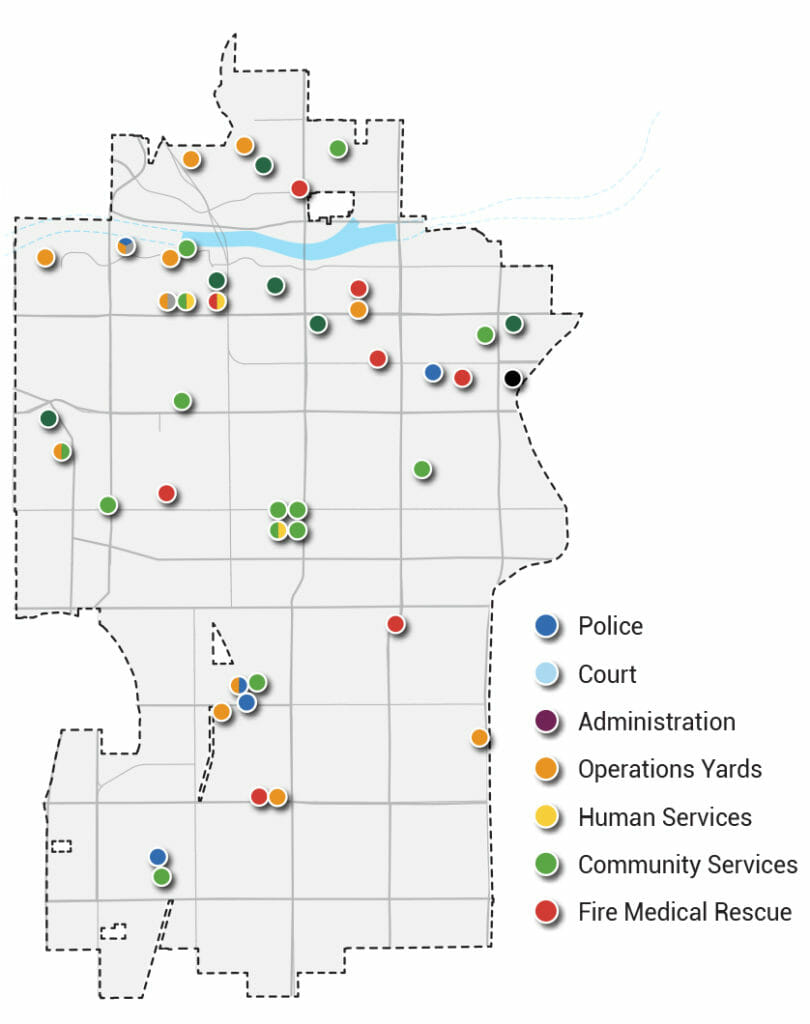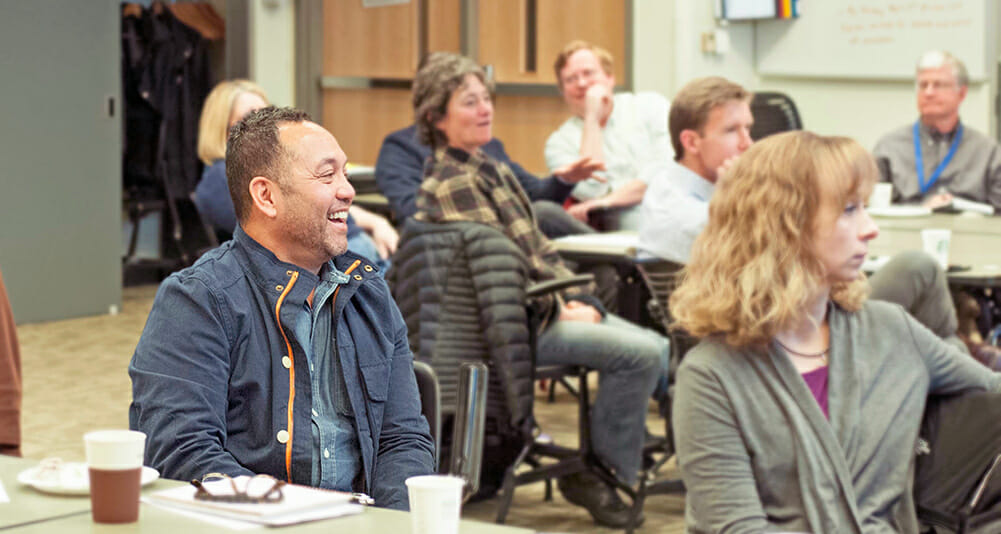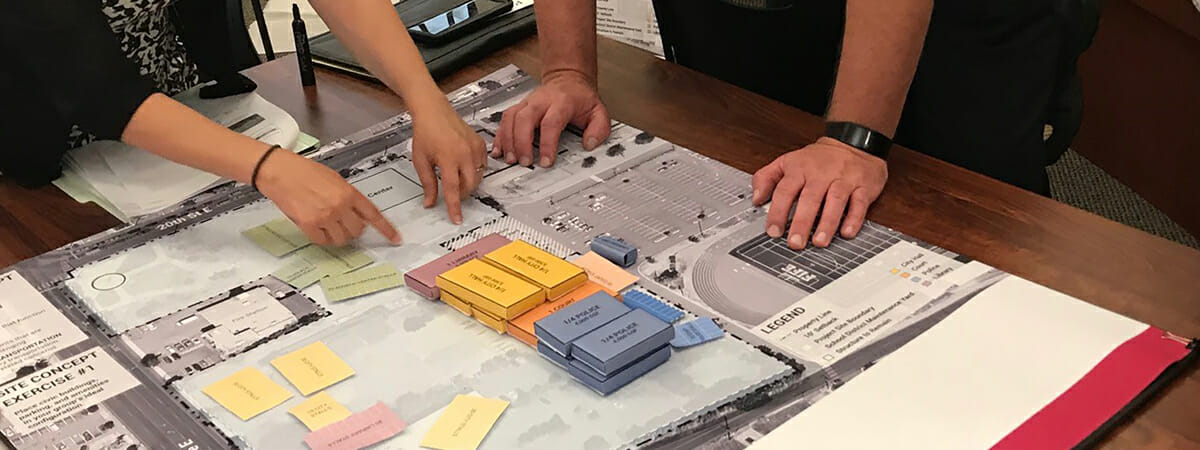Facilities are some of the most under-appreciated, under-resourced, and misunderstood government assets. Though COVID-19 is spurring faster adoption of remote work practices, government facilities will remain essential places to store and maintain materials and equipment, define workplace culture, most effectively collaborate, and offer the community direct access to its service-providers.
Facilities can have a substantial impact on an organization’s success. Well-designed, maintained, and managed facilities can elevate service, reduce operational costs, support emergency response, and help create a positive organizational culture. And poorly managed facilities can easily have the opposite effect. They can drain resources, decrease service, and negatively impact workforce morale.
There are many reasons why it makes sense for government agencies to have a facilities plan. A facilities plan is the essential guidebook to proactively meet future needs, most effectively target staff and budgets, and achieve multiple benefits from investments.
It might help to think of planning your facilities the same way you plan to maintain your streets, parks, or utilities. Why shouldn’t you do the same for your own facilities?
An investment in a facilities plans will help your organization:
- Focus staff and target maintenance and capital investment resources.
- Anticipate change and mitigate challenges.
- Build consensus and support for actions.
- Cultivate partnerships and funding for facilities investments.
- Logically assess opportunities when they arise.

MAKERS helped the City of Tempe adopt strategies to expand service to a growing community, maximize the useful life of existing structures, free valuable city property for public-private development, and prioritize facilities investments. This facilities plan was honored by an Arizona American Planning Association award in 2019.
What facilities plans are
Facilities plans are essential to help your staff, leadership, and elected officials make good decisions around facilities investments over time. They’re a great tool to help your organization address a variety of challenges, such as ever-increasing maintenance costs, outdated design that doesn’t support modern operations, and locations that aren’t ideal to support typical service or emergency response. Facilities plans outline a strategy to make smart facility investments that reduce operating costs, support your workforce, achieve operational goals, and enhance the communities you serve.
In summary, facilities plans are:
- A vehicle to help manage your largest assets and liabilities.
- A collaborative document that builds interdepartmental consensus around work priorities.
- A playbook to improve operational efficiency, emergency preparedness, equity, and other values.
- A flexible tool that informs confident decision-making and identifies strategies to respond to challenges, opportunities, and changing conditions.
- A roadmap for investments that supports strategic property acquisition and/or divestment and entering into beneficial partnerships.
For a facilities plan to be of use it must remain focused in its intension and parameters.
What facilities plans are not
It’s equally important to understand what facilities plans are not. Facilities plans do not:
- Design a site or produce construction documents. This comes in later phases, after strategic planning decisions have been made.
- Evaluate operations outside of a facilities context. A facilities plan is not the right tool to evaluate how to more efficiently organize departments, empower employees, or provide leaner service. It is, however, the right tool to implement facilities changes that will support your organizational goals.
- Eliminate the need for environmental review or make funding decisions for individual projects.
Signs you need a facilities plan
Government agencies face numerous challenges when it comes to facilities. Do any of these sound familiar?
- Your facility portfolio has evolved piecemeal and “temporary” fixes have become permanent. We have seen many communities operating from facilities added incrementally without a comprehensive vision. Your facilities are not purpose-built or well-positioned to support growth or respond to change. It’s not uncommon for us to find at least one “temporary” facility in use that is more than 15 years old.
- You have a massive maintenance backlog and limited funding. This makes it hard to move beyond wasteful band-aid fixes and pull the trigger on significant, transformative projects.
- Facility size, design, and locations make your workflows inefficient and increase operational costs. Eventually, time intensive workarounds have become the status quo.
- Your operations and maintenance staff is housed in facilities of significantly lower quality than your admin staff. This can impact staff morale and productivity and your ability to attract, engage, and retain quality employees.
If any of those scenarios – or situations like them – apply to your organization, you would benefit from a facilities plan.

Engaging stakeholders is an essential part of facilities planning. MAKERS led stakeholders in developing alternatives as a part of the 2015 Seattle Public Utilities Facilities Master Plan.
Getting started on your facilities plan
Diving into a facilities plan requires some up-front legwork. You’ll likely need to gather some data to inform your long-term facilities vision and ensure the resulting step-by-step plan for action is right for you. Scoping the effort properly is also important; some agencies need a comprehensive facilities strategy, while others get the most benefit focusing on one department or line of business or one campus or site. Every organization is different and our facilities planners can help your project team define the project scope and information most critical to making good facilities planning decisions.
Contact MAKERS to find out how we can help your organization complete a transformative facilities plan.






